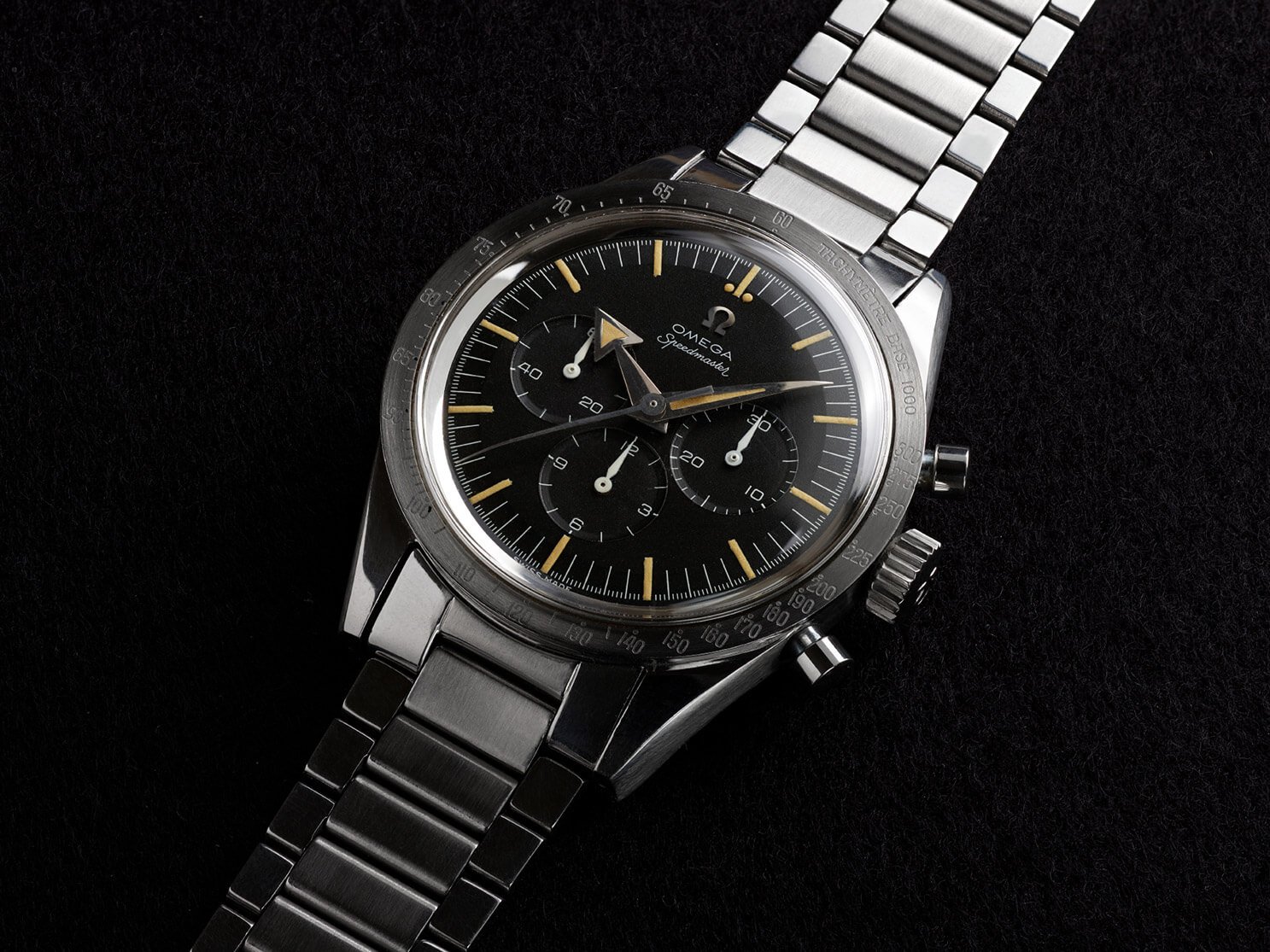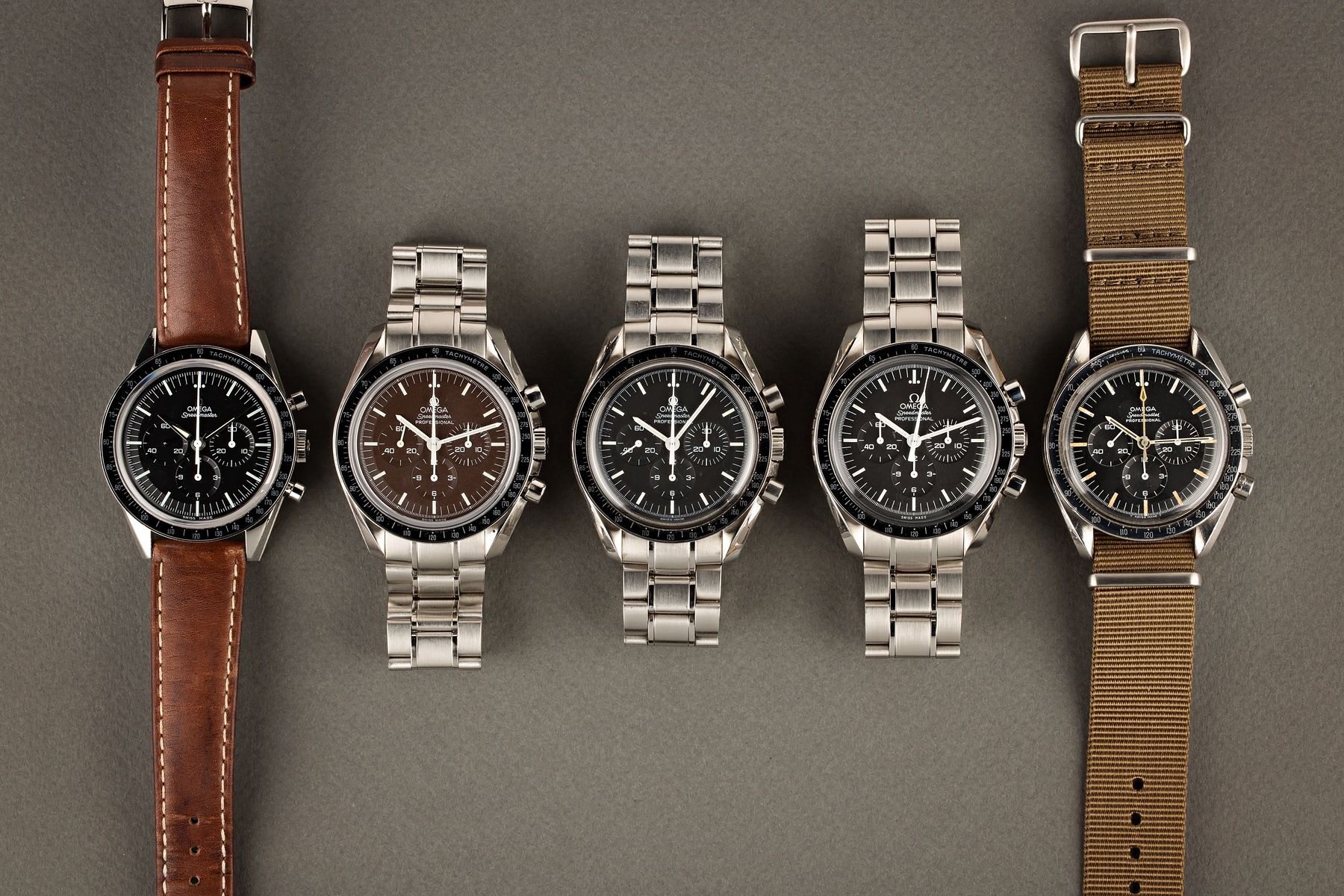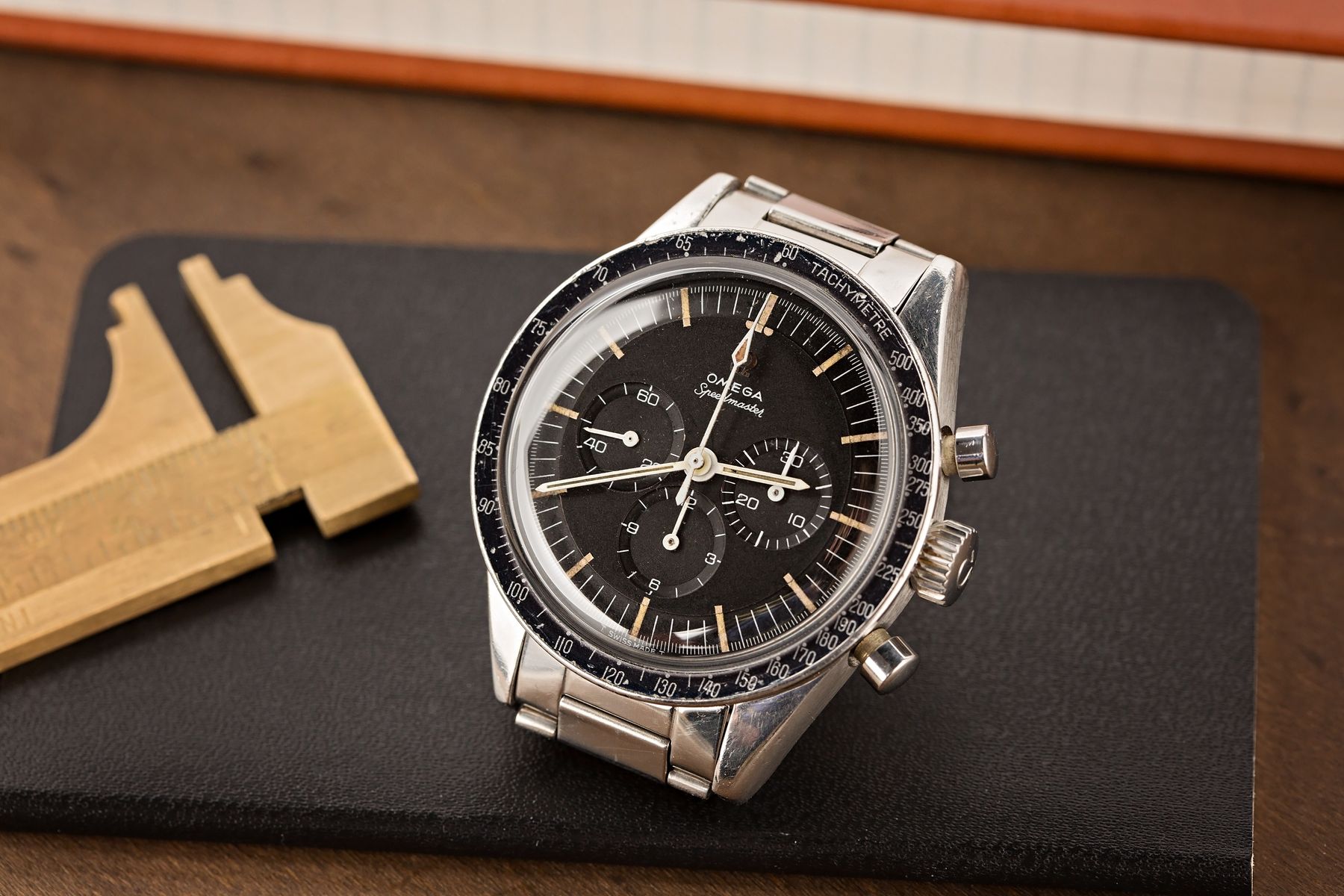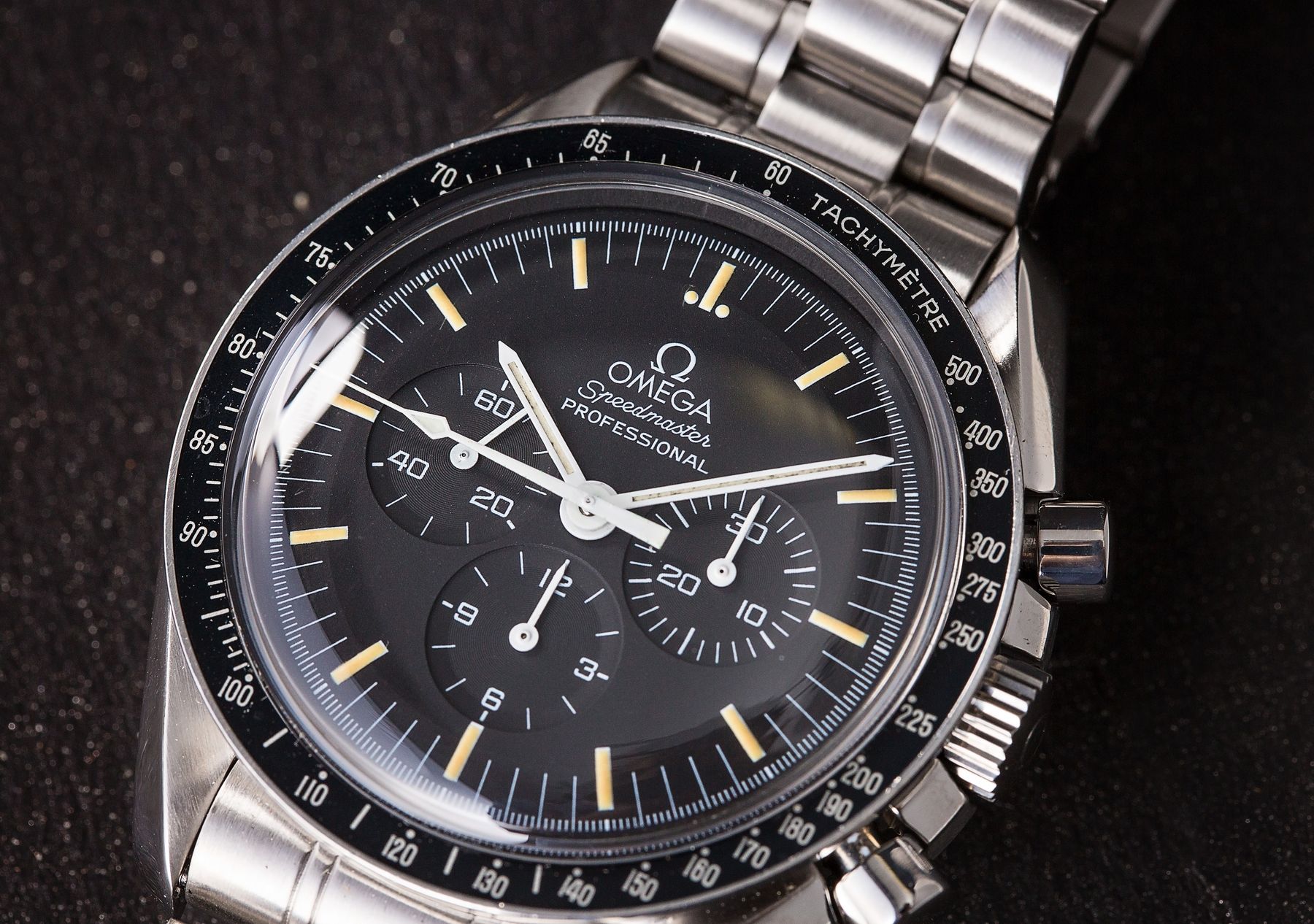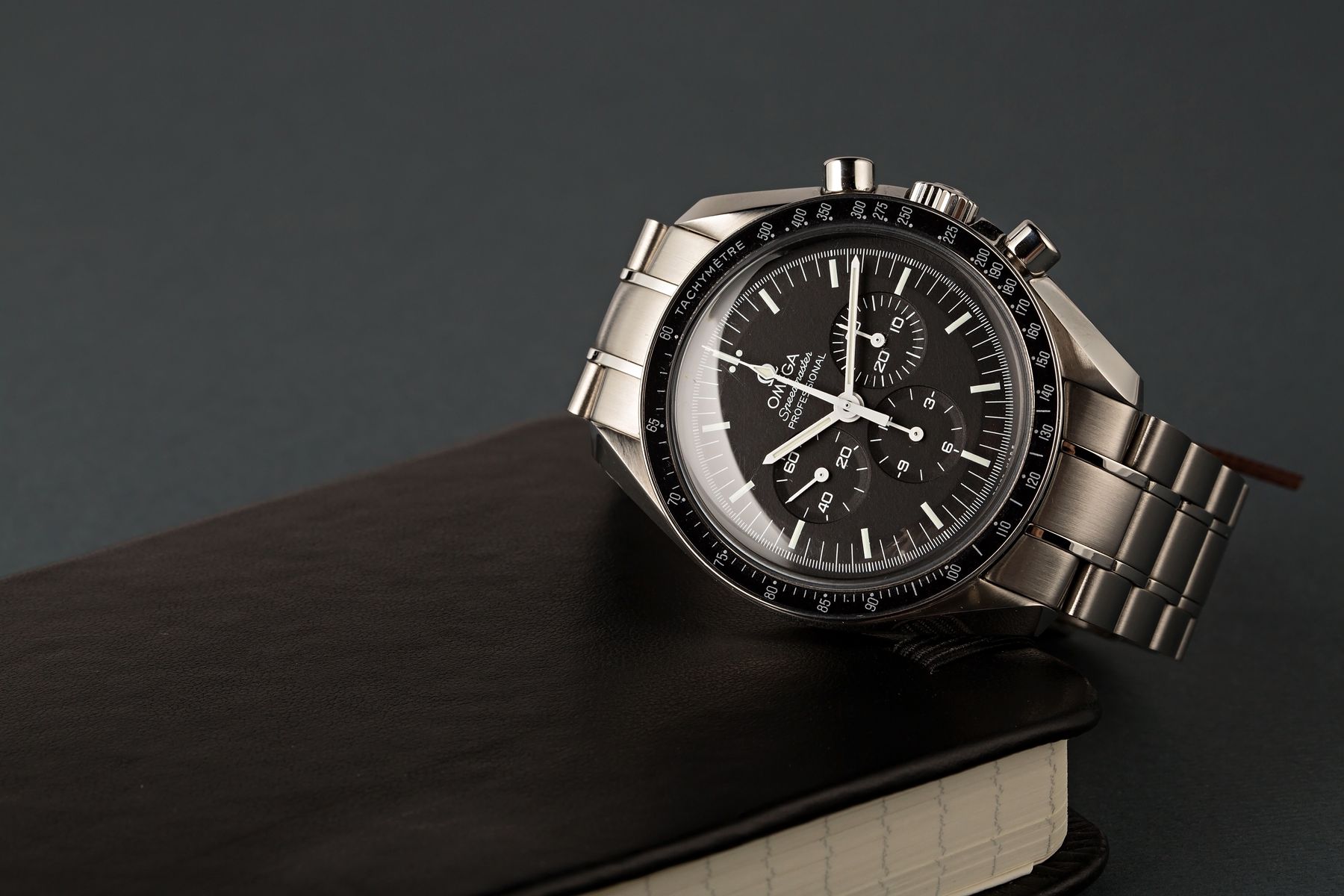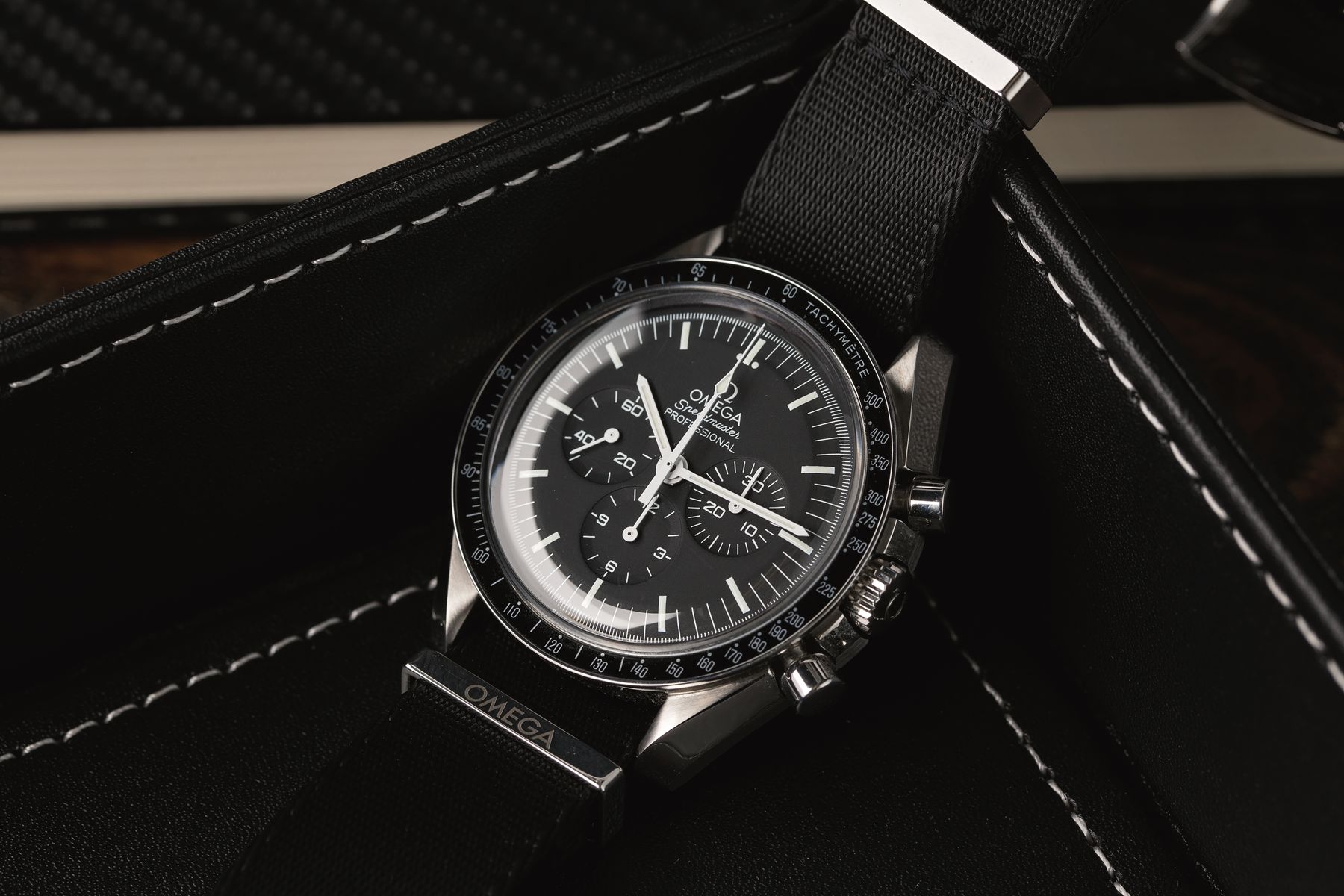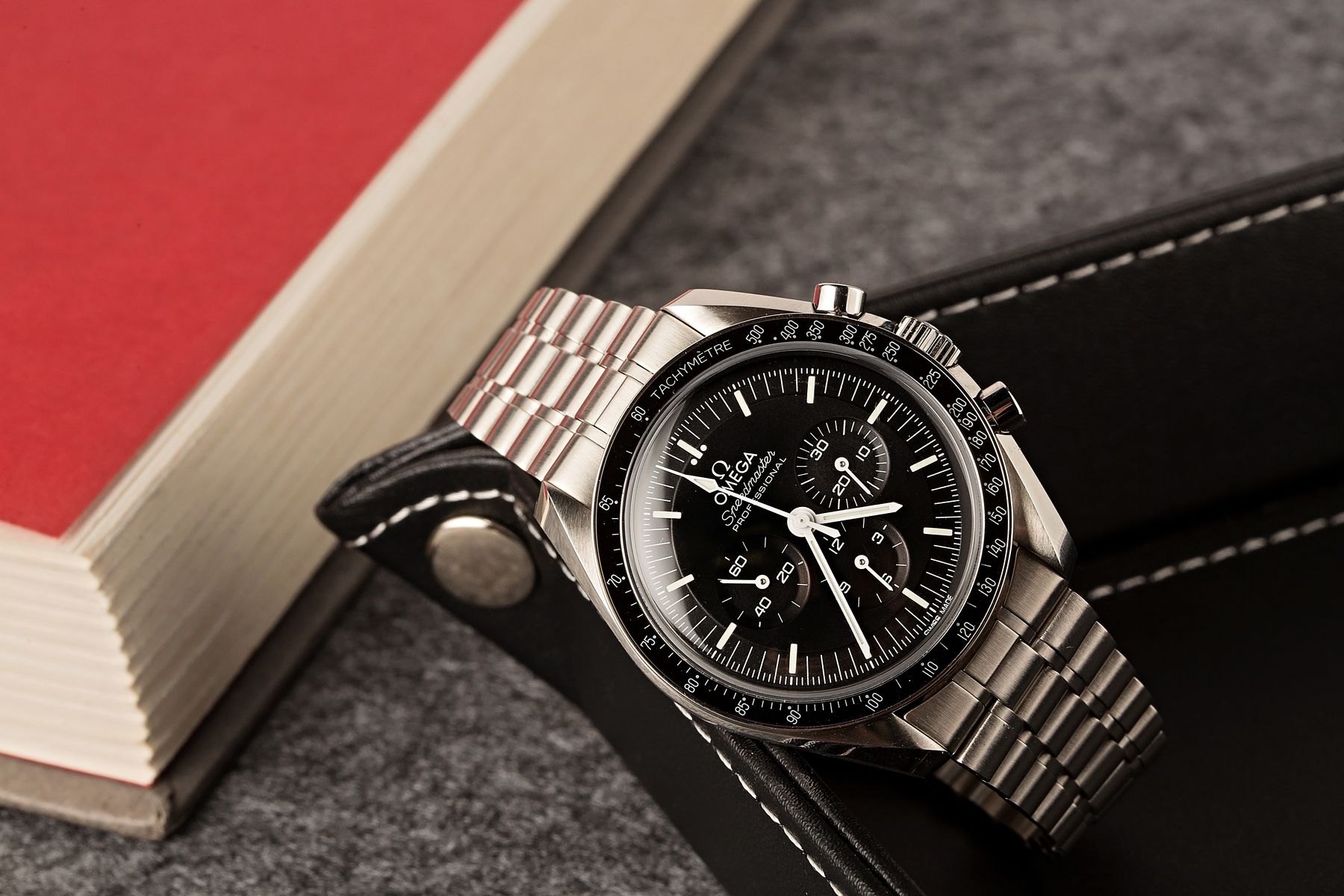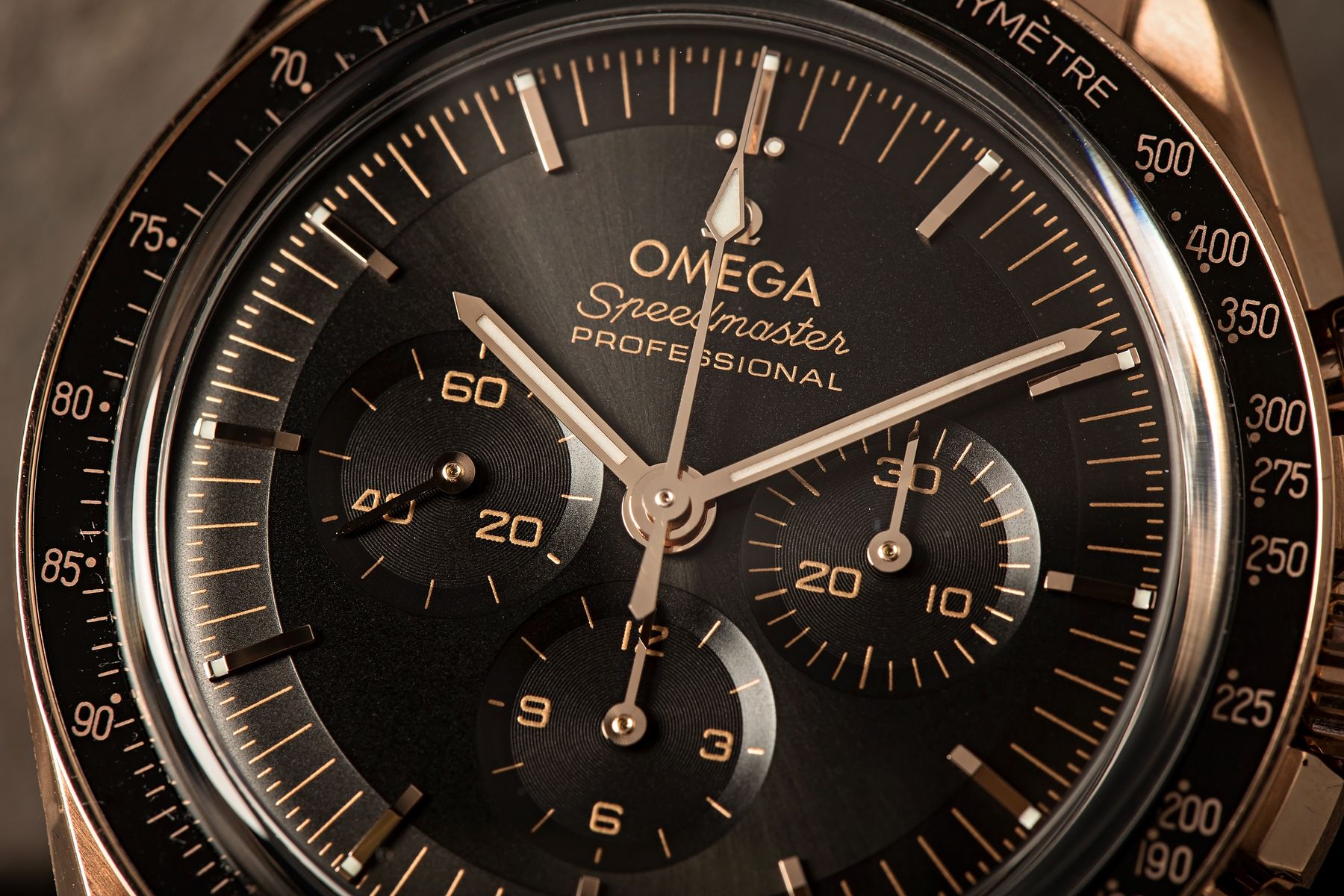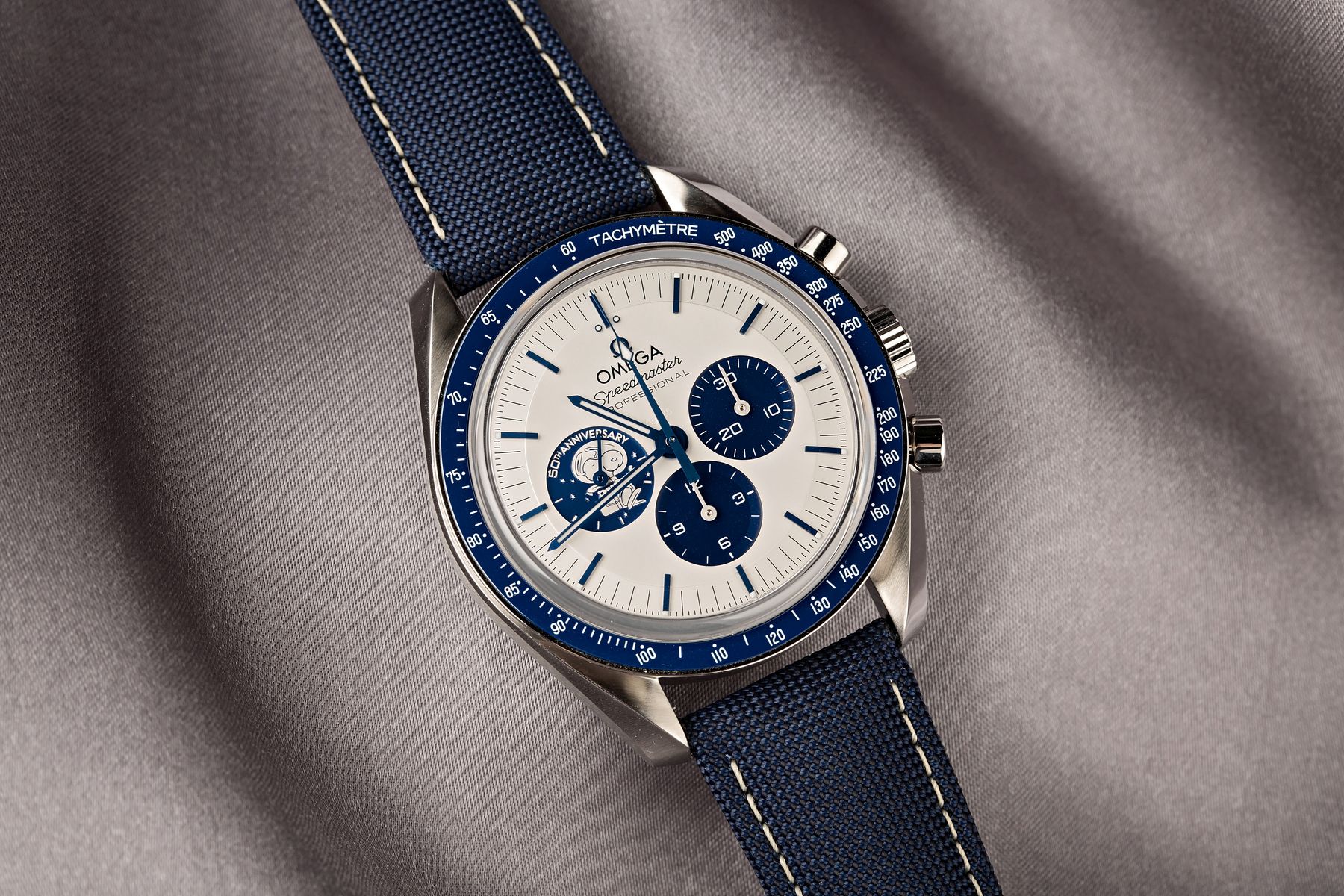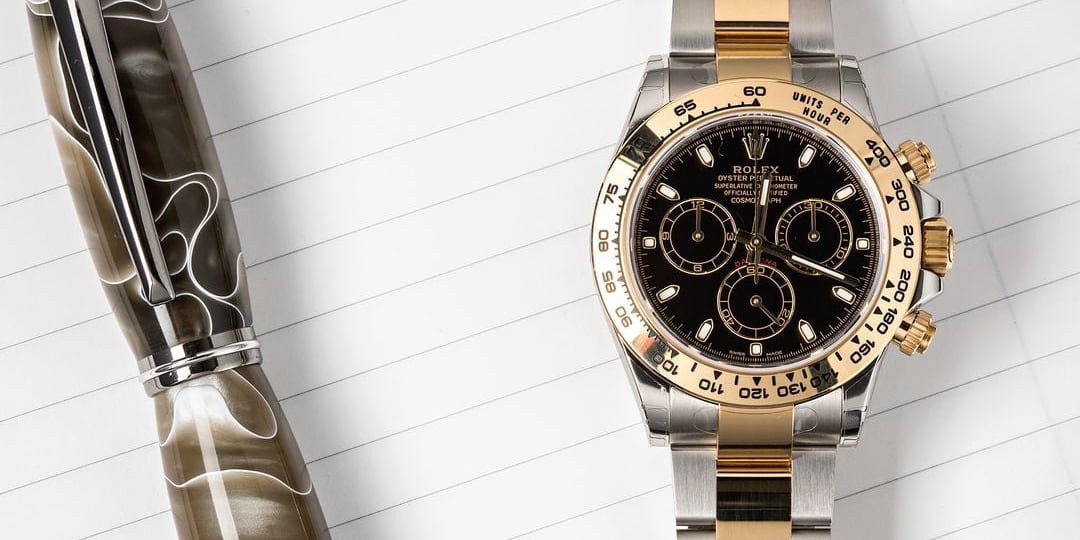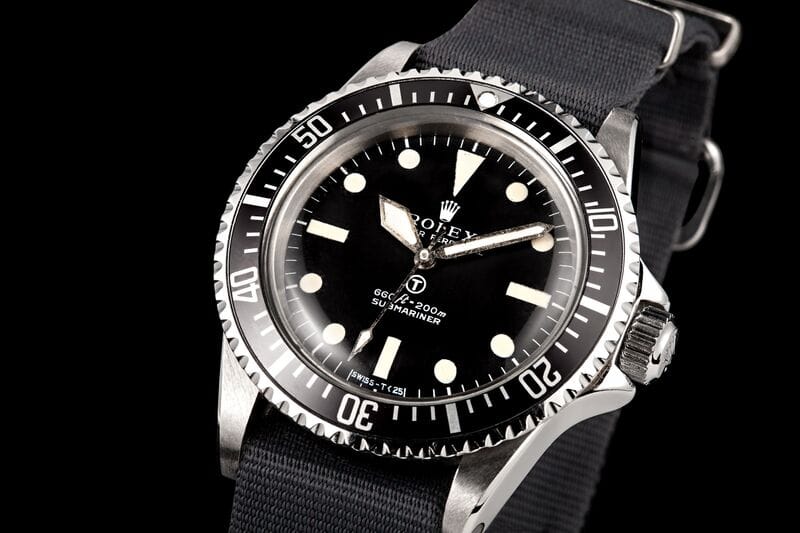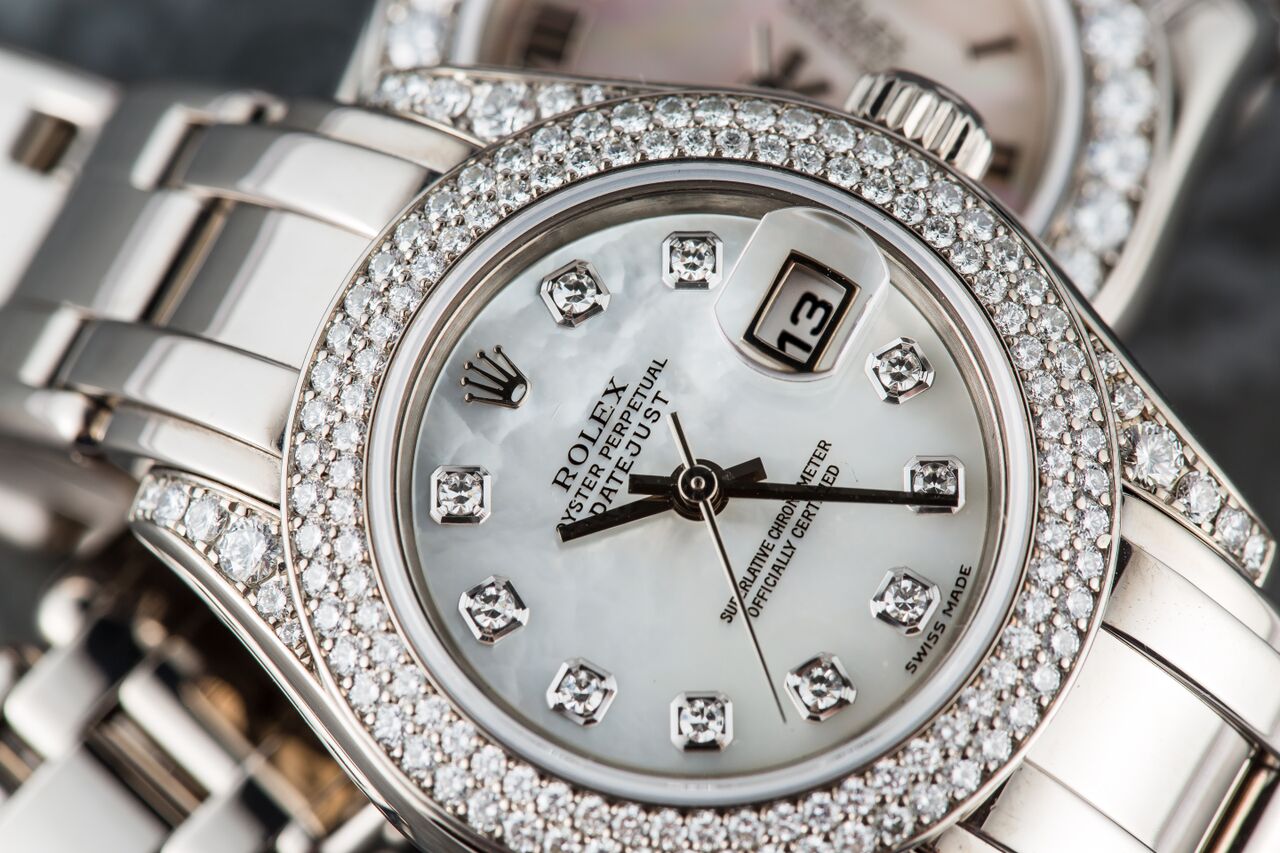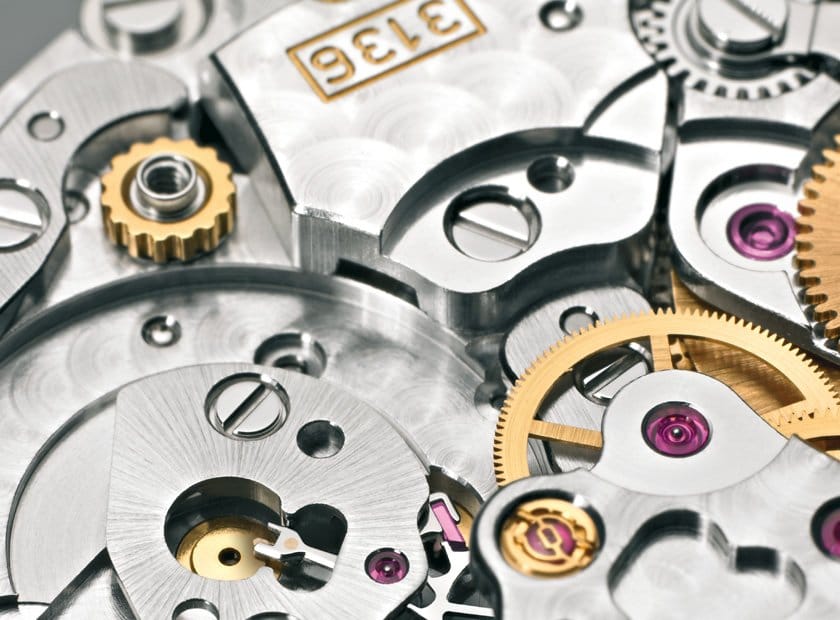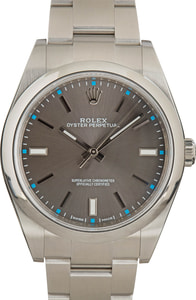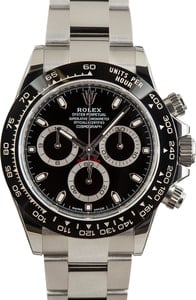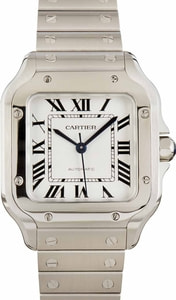It might just be me, but there is something about spotting the Omega Speedmaster out in the wild that always puts a smile on my face. I can’t think of any other watch that is so popular and so well accepted across the whole spectrum of the collecting community. Even its nickname is evidence of real affection from every side; from the complete newbie through to the most hardcore haute horologist, everyone loves a Speedy.
It is perhaps the world’s most identifiable chronograph, and it is certainly the one with the most impressive résumé. Since its giant leap in 1969 aboard Aldrin’s wrist, it has been able to stake its claim as the first watch worn on the surface of the moon.
Now in the game for more than 60 years, its revolutionary styling, the one that set out its trio of stopwatch counters in the classic arrangement and moved the tachymeter scale off the dial and onto the bezel, has inspired the layout for a host of rivals—but has never been bettered.
Today, that time-honored look has barely altered and the latest version of the ‘Moonwatch’ is very clearly from the ‘if it ain’t broke’ school of design that started in the 1950s.
Below, we’ll take a look at how we got from there to here, and follow the fascinating history of the one and only Omega Speedmaster.
Click here for our Ultimate Buying Guide on the Omega Speedmaster.
Starting Line: The Omega Speedmaster History
1957 was one of the most important years in Omega watches‘s history. The brand launched a triumvirate of models that would go on to become icons, known jointly as their ‘Professional’ collection. The highly paramagnetic CK2914 Railmaster was aimed at engineers and scientists, going up against Rolex’s new Milgauss and the IWC Ingenieur. The CK2913 Seamaster 300 was meant for the serious diver, in competition with the Blancpain Fifty Fathoms and the ubiquitous Submariner.
The CK2915 Speedmaster, on the other hand, was not originally designed for the rigors of space travel but was built with its feet very much on terra firma. It was to be used as a high precision sports and racing timer, with its 1/5th second chronograph, and it cemented Omega’s position as official timekeeper of the Olympic Games.
Mechanical chronograph wristwatches were still a rarity and the Speedmaster differed greatly from anything that had come before. Designer Claude Baillod created the initial model, a 39mm piece with, for the first time ever, an engraved tachymeter scale on the bezel. What Omega snappily titled their ‘Tacho-Productometer,’ moving it off the perimeter of the dial where it had always traditionally been put, freed up space and made the Speedy especially legible. Coupled with the watch having the first 12-hour totalizer to be included on a chronograph, and the fact that it was triple-sealed and waterproof to 200m, as well as shock proof and antimagnetic, and it quickly gained a reputation as an extremely capable tool watch.
The power was provided by the legendary Caliber 321, a movement that dated from as far back as 1942 and was made in conjunction with Lemania, one of Omega’s ancillary companies at the time. Measuring just 27mm in diameter, the 321 is among the smallest chronographs ever made and is still recognized as a true great. The lateral clutch, column wheel controlled mechanism was used in a number of models from other manufacturers, such as Breguet and Patek Philippe, and Vacheron Constantine still use it today.
The CK2915, also known as the ‘Broad Arrow’ for the shape of its hands, although very successful, only stayed in production for two years. Its short run makes it particularly sought after on the vintage market but, more importantly, it laid down the basic elements for everything that followed.
The Follow-Up
It was superseded in 1959 by the 2998, perhaps the reference that most closely resembles the Speedy design as we recognize it today. It retained the same sub dial layout and the high contrast dial markers of the original, and added a black aluminum bezel insert as opposed to the 2915’s brushed steel surround. A little bigger at 40mm, the most noticeable difference however is the handset, changed from the broad arrows to sword-like Alpha hands.
This model too was only in service for a relatively short run, being retired in 1963, but in that time it went through eight distinct sub-references. The differences between each are slight; the main change being the units on the tachymeter scale going from Base 1000 to Base 500 around the third iteration in the series.
But the 2998 will be most fondly remembered as the model that started the Speedmaster’s long and illustrious relationship with NASA and the burgeoning age of space exploration.
Astronaut Wally Schirra, only the fifth American to leave Earth’s atmosphere, wore a 2998 on October 3rd 1962 aboard the Sigma 7, during his nine-hour, six orbit Mercury-Atlas mission. As yet, NASA had not selected official, flight-qualified watches for its crews, so Schirra’s Speedy was his own personal piece. Nevertheless, it performed faultlessly, and paved the way for its successors to go even further.
The Moonwatch
In 1962, Omega brought out the new generation, the 105.002, followed a year later by the 105.003. It was this latter model which was originally selected and tested by NASA in preparation for its first moon mission. Also in the running were pieces by Breitling, Rolex and Longines among others, and the space agency subjected each to some of the most arduous tests ever devised. Examined for reliability in extremes of heat, cold, pressure and humidity, along with batteries of other trials, by March of 1965, only the Omega had survived.
Weirdly, no one told Omega about the success, and the first the brand knew about it was seeing astronaut Ed White wearing his as he took America’s inaugural spacewalk that June as part of the Gemini 4 mission.
Following NASA’s selection, Omega split the product line into two, and the new asymmetrical case models, featuring crown guards for added protection, would become the Speedmaster Professionals. That meant the watch NASA had tested so thoroughly would not be the one to actually go into space. The 105.003 was retired in 1966 and replaced with the 42mm 105.012—the real moon watch.
On July 20th 1969, Neil Armstrong and Buzz Aldrin landed on the lunar surface. Both had been issued 105.012 models, but Armstrong had been forced to leave his behind in the command module piloted by Michael Collins as a backup to a failing electronic timer. So it was Aldrin’s watch that became the first to be worn on the moon. A vital piece of historical memorabilia no doubt, but if you were hoping to see it in a museum any time soon, prepare for a disappointment. It disappeared in 1970 on its way to the Smithsonian and has never been seen again.
Continued Success
While the 105.012 is the one thought of as the legitimate Moonwatch, it is the slightly later 145.012 that has been worn by the most astronauts—and the one Michael Collins wore aboard Apollo 11. Sadly, it is also the reference that marked the last time the fabled Caliber 321 would be used inside the Speedmaster.
Almost a victim of its own success, by 1969, demand for the watch was so great Omega were looking for ways to speed up production while also cutting costs. They swapped the movement for the Caliber 861, a less expensive, cam-controlled chronograph they hoped would help them fight off the first wave of quartz models starting to come in from Japan.
It debuted inside the 145.022 that year and the reference would stay in production until 1988. It continued Omega’s impressive claim of having one of their watches on every manned U.S. space flight in history, including playing a vital role in getting one mission back to earth safely in the direst of circumstances.
When the reserve oxygen tank aboard Apollo ‘Houston, we have a problem’ 13 exploded, severely damaging the spacecraft and its inboard electronic systems, it was Commander Jim Lovell’s Speedmaster that precisely timed the 14-second firing of the re-entry rockets that guided the ship back home. NASA presented Omega with their ‘Snoopy’ award in October 1970, the highest honor they have, as thanks for their part in the rescue.
The Speedy Today
Still one of the most famous names in horology, the Omega Speedmaster has been offered in a hugely diverse range of guises in recent years. From perpetual calendars to split-second versions to, aptly enough, moon phases, it has moved far beyond its tool watch roots and entered the high end market, with precious metal examples and diamond accented hour markers. The once exclusively hand-wound movements have been joined by automatic and even quartz calibers and a limited or special edition seems to emerge every other week. In all, there are more than 250 models to choose from all bearing the Speedmaster name.
But for purists, it will always be the official Moonwatches from those heroic early space missions that will remain the true grail pieces.
A Brand-New Speedmaster Movement
To briefly summarize, the Speedmaster initially relied on the hand-wound caliber 321 movement with a lateral clutch and column wheel chronograph, which was replaced in 1969 by the caliber 861 with a cam-controlled chronograph. The caliber 1861 followed in 1996, featuring rhodium-plated parts instead of the copper-plated and un-plated parts used on its predecessor, caliber 861. The 1861 movement, and its derivatives continued to power the Speedmaster until just recently.
Omega unveiled yet another movement for their iconic Speedmaster in 2019, just in time to celebrate the 50th anniversary of the Apollo 11 mission. The newer movement retired the caliber 1861 and picked up a Co-Axial escapement and Master Chronometer rating in the process. The caliber 3861 is a hand-wound movement resistant up to 15,000 gauss. It also boasts a convenient 50-hour power reserve and hacking seconds. Ultimately, it’s the Master Chronometer edition of its predecessor, ref. 1861.
Omega Speedmaster Timeline:
1957: Omega Released the first Speedmaster model, ref. CK2915 with the caliber 321.
1959: Ref. 2998 came to market featuring a black Tachymeter bezel, 40mm case, and Alpha hands.
1962: A new generation of Speedmaster watches hits the market via ref. 105.002, followed a year later by ref. 105.003.
1967: Ref. 145.012 is the last Speedmaster to use the caliber 321.
1969: Ref. 105.012 becomes the first watch on the Moon.
1969: Omega releases the caliber 861 via ref. 145.022.
1970: Omega earns the coveted NASA “Snoopy” award.
1996: The caliber 1861 makes its debut.
2019: Omega releases the current caliber 3861.
Speedmaster Variations
Some Moonwatch models feature the “Dot Over 90” or “DO90” bezel, which refers to the position of the dot at the 90 marker. On these bezels, the dot is placed over the 90 marker instead of next to it. Omega recently resurrected this feature alongside the Moonwatch’s iconic step dial and applied Omega logo. Omega has also released numerous anniversary Speedys to ring in various hallmarks in the model’s history, such as its many Apollo missions and the prestigious Snoopy award from NASA.
Other Popular Speedmaster Watches
Today, the Speedmaster is an entire collection of chronograph watches within Omega’s catalog, and there are a number of Speedmaster models, both vintage and modern, that are highly popular among today’s collectors.
- Ref. 310.30.42.50.01.001: This edition of the Speedmaster is the current representation of the stainless steel Speedmaster Moonwatch, complete with the next-generation cal. 3861 hand-wound movement, DO90 bezel, step dial, and even an asymmetrical case, like the Speedy worn on the Moon. It also features a contemporary 42mm case, Hesalite crystal, and a silky 5-link bracelet.
- Ref. 310.32.42.50.02.001: As mentioned above, an Omega Speedmaster was onboard the ill-fated Apollo 13 mission and played an integral part in the Astronaut’s survival. For its role during the mission, the Speedmaster was awarded the NASA “Silver Snoopy Award,” which Omega commemorated 50 years later with ref. 310.32.42.50.02.001. The watch is peppered with numerous references to the award, including a Snoopy floating through space on the register at 9 o’clock and a Snoopy in his Command and Service Model on the case back.
- Ref. 311.92.44.51.01.007: The “Dark Side of the Moon” is another special edition of the Speedmaster featuring a contemporary all-black design set. The case is machined from a single block of black ceramic, and the bezel and dial are crafted from brushed and polished ceramic to match. Although not a true Moonwatch, the Dark Side of the Moon ref. 311.92.44.51.01.007 is an intriguing edition of the Speedmaster Chronograph sought-after by collectors worldwide.
- Ref. 3510.50.00: The Speedmaster “Reduced,” ref. 3510.50.00 is a 39mm edition of the modern stainless steel Speedmaster. It features an automatic cal. 3220 movement and a traditional Hesalite crystal. The Speedmaster Reduced might appeal to your watch tastes if you have smaller to average-sized wrists.
Until man finally goes to Mars, no other watch will be able to compete with the Speedmaster in terms of legacy. And if rumors are true, Omega is working on yet another variant of the all-conquering Speedy to accompany astronauts on that first trip to the red planet too.
